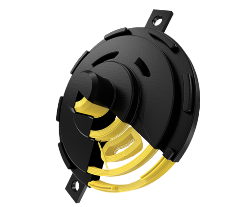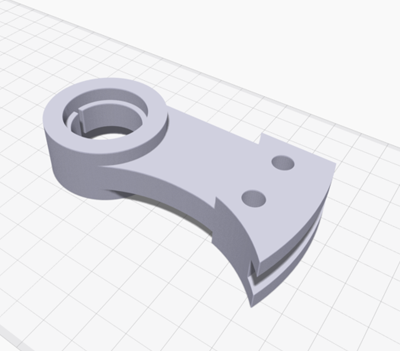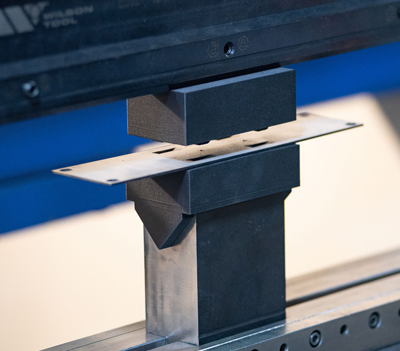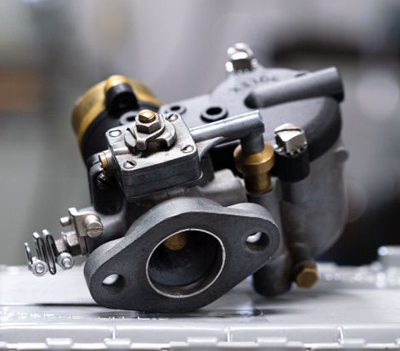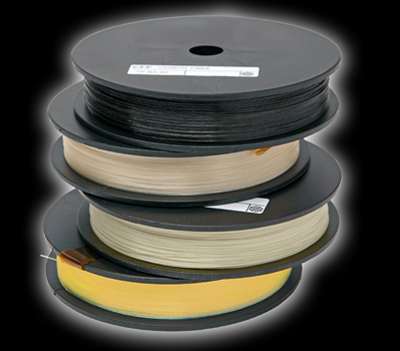
The company
System Strobel GmbH & Co. KG from Aalen is one of the leading manufacturers of rescue and emergency medical vehicles in Germany.
With around 200 employees, around 350 vehicles are produced here every year - individually adapted to the requirements of organizations such as the German Red Cross, the Johanniter or local authorities. System Strobel offers both the conversion of panel vans (e.g. based on Mercedes, VW or Ford models) and the production of box bodies, as is traditionally known from larger ambulances.

From experiment to series production: The entry into additive manufacturing
Strobel system with initial trials on desktop and large-format 3D printers. The aim was to get to know the technology and
assess the potential for vehicle expansion.
However, the results of these systems were not sufficient for series use - particularly in terms of dimensional accuracy, surface quality and process reliability. The printing speed also quickly reached its limits.
The breakthrough finally came with the investment in the Markforged FX20 - the largest machine
from Markforged. Instead of taking a step-by-step approach, System Strobel deliberately opted for a direct start with an industrial machine. The main reason: "Installation space matters", as Marius Garzorz, project manager for design, emphasizes. Large, complex geometries are no exception, especially in special vehicle construction - the large installation space was therefore a decisive factor.
With the FX20, 3D printing has been firmly integrated into series production for the first time. The combination
of high dimensional accuracy, stable component quality, large installation space and intuitive operation
convinced - and took the step from the test application to the productive
Utilization possible.
When additive manufacturing - when conventional methods?
System Strobel uses different production methods depending on the application:
Additive manufacturing where conventional methods reach their limits
For System Strobel, the focus of additive manufacturing is not purely on cost savings, but on the possibility of realizing solutions in the first place. A decisive advantage of the Markforged FX20 is the ability to manufacture components that would be difficult or impossible to produce using other processes. These include, for example, complex adapters and housings that integrate seamlessly into the vehicle contours. What used to be a challenge for CNC machining is now produced in just a few hours using 3D printing - precise, stable and functional.
Printed are for example:
- Light and camera mounts
- Signal and blinker adapter
- Covers and trim strips
- Pulleys, battery adapter, cover panels
- Interior trim elements
- Individual parts for special equipment such as
Caterpillar chairs

"With the FX20, we have moved beyond the experimental 3D printing stage and are now ready for series production.
manufacture."
- Marius Garzorz, project manager for construction
Application example: Lighter with carbon
An illustrative example of the advantages of additive manufacturing is the carrier chair with caterpillar tracks. Numerous components previously milled from aluminum - including the handle, a pulley and various connecting and cover parts - were replaced by components made from Onyx.
Particularly stressed elements such as the connecting piece to the handle were specifically reinforced with continuous carbon fiber. This results in extremely strong and at the same time lighter components - perfectly adapted to the requirements of daily rescue operations.
The advantages are clear:
- Weight saving
- Significantly simpler design
- No mechanical post-processing
Every gram counts, especially with devices that are regularly carried or loaded. The new solution not only saves weight, but also considerably simplifies the assembly process. The crawler track itself also benefits: The idlers made of Onyx alone save 700 grams compared to the previous aluminum version. Overall, the use of 3D-printed components has saved around 2.5 kg in weight - a significant improvement in handling and efficiency.




Organized & efficient: The new production process
Additive manufacturing has long been more than just an innovation project at System Strobel - it is firmly integrated into everyday design and production. New requirements, such as changes to signaling systems, lighting modules or camera systems, are implemented directly in the design, printed in the FX20 and installed in the final assembly.
Typical Strobel system: pragmatic, fast and efficient.
We print what is worthwhile - and what is difficult or impossible to produce using conventional methods. Adapters, brackets, trim strips, interior panels or even camera mounts are produced directly on the basis of CAD data - without any detours via tools or molds.
- Components are produced from quantity 1
- Machine utilization is usually 12-18 hours a day - even overnight or on
Weekend
- Over 95 % of the printed parts are produced with the FX20
- The remaining 3D printers from other manufacturers are hardly used anymore
The FX20 - the backbone of small series production.
The benefits are particularly evident in vehicle conversions: where previously complex brackets had to be laboriously milled or adapted, today individual solutions can be created with just a few clicks. This not only significantly shortens the project duration, but also enables solutions that would be impossible to implement using conventional methods.

Skepticism becomes trust: Customers and employees are convinced
Both employees and customers are positively surprised by the print quality. Where earlier components seemed rather experimental, today "components ready for series production can be manufactured". The surface quality, dimensional accuracy and robustness of the components allow them to be used in the end product - visibly and tangibly. This creates trust and shows that additive manufacturing is not just an alternative, but an established manufacturing solution.

Summary and outlook
System Strobel no longer uses 3D printing merely as a supplement, but as an integral part of the production of its vehicle series. The FX20 forms the backbone for flexible, precisely fitting and economically viable components in small series production.
3D printing offers completely new possibilities, especially for vehicle conversions with many special requests - without compromising on quality or function.
System Strobel is currently examining whether it makes sense to expand the machine park - because the FX20 is regularly working at full capacity. The next step? Identifying, digitizing and printing even more components - for even more flexibility and efficiency.
Would you like a live demo, have questions or need a quote for a Markforged 3D printer?
Contact us now!
![]() Mark3D GmbH
Mark3D GmbH
Rodenbacher Straße 15
35708 Haiger
Phone: 07361 63396 00
E-mail: markforged@mark3d.de
Global market leaders rely on Markforged 3D printers










